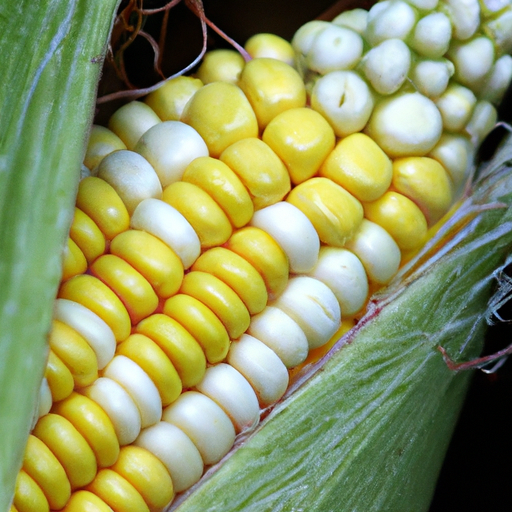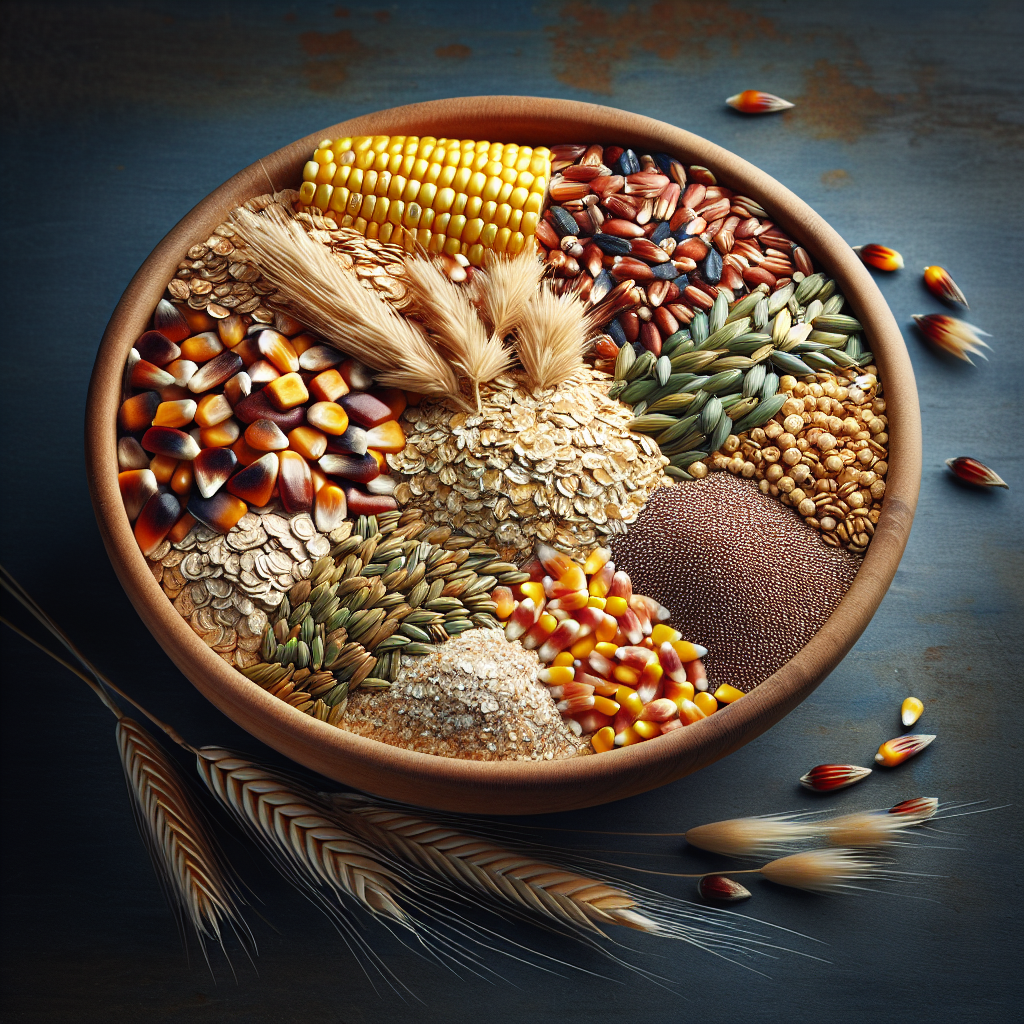If you’ve ever wondered about the secrets hidden in your chicken feed, then get ready for a fascinating journey into the world of grain-free chicken nutrition. Have you ever pondered how these innovative feeds differ in composition from their traditional counterparts? Well, prepare to be amazed as we unravel the mysteries of grain-free chicken feed and discover the unique ingredients and benefits that set them apart. Get ready to gain a deeper understanding of what’s fueling your feathered friends’ optimal health and vitality. Let’s dive into the marvelous world of grain-free chicken feeds!
Composition of Traditional Chicken Feeds
Traditional chicken feeds are carefully formulated to provide optimal nutrition for your feathered friends. The composition of these feeds is a result of years of research and understanding of the specific dietary needs of chickens. Let’s take a closer look at the different components that make up traditional chicken feeds.
Protein Sources
Protein is an essential component in the diet of chickens as it helps support healthy growth, feather development, and egg production. Traditional chicken feeds commonly derive their protein from sources such as soybean meal, fish meal, and meat and bone meal.
Soybean meal is a popular protein source due to its high protein content and amino acid profile that closely matches the needs of chickens. Fish meal, derived from fish waste, provides an excellent source of digestible protein. Meat and bone meal, made from rendered animal tissues, offer additional protein and essential minerals.
Grain Content
Grains are a significant component of traditional chicken feeds and serve as an energy source for chickens. Corn, wheat, barley, and sorghum are commonly used in these feeds due to their availability and nutritional composition.
Corn provides chickens with carbohydrates, essential for energy production, while wheat and barley contribute to the overall carbohydrate content in the feed. Sorghum, a gluten-free grain, is also added to enhance the feed’s nutritional value.
Fillers and Additives
To ensure the feed’s texture and stability, fillers and additives are included in traditional chicken feeds. Corn gluten meal, rice bran, soybean hulls, and dried beet pulp are commonly used fillers in these feeds.
These fillers help create a balanced texture and provide additional sources of carbohydrates and fiber. Rice bran, in particular, adds fat content to the feed, contributing to the overall energy value for the chickens.
Vitamins and Minerals
Vitamins and minerals are important for the overall health and well-being of chickens. Traditional chicken feeds are enriched with essential nutrients such as vitamin A, vitamin D, vitamin E, calcium, phosphorus, and magnesium.
Vitamin A is crucial for healthy vision and immune function, while vitamin D helps with calcium absorption and supports bone health. Vitamin E acts as an antioxidant, protecting cells from damage. Calcium, phosphorus, and magnesium are essential for strong bones, eggshell quality, and normal muscle function.
Fiber Content
Fiber is essential for maintaining a healthy digestive system in chickens. Traditional chicken feeds contain a moderate amount of fiber to support efficient digestion. Fiber can be derived from various sources, including wheat bran, rice bran, and alfalfa meal.
Now that we’ve explored the composition of traditional chicken feeds, let’s delve into the unique characteristics of grain-free chicken feeds.
Composition of Grain-Free Chicken Feeds
In recent years, grain-free diets have gained popularity among chicken owners looking for alternative feed options. Grain-free chicken feeds are formulated to meet the dietary needs of chickens while eliminating grains from their diet. Let’s take a closer look at the composition of grain-free chicken feeds.
Protein Sources
Protein remains a crucial component in grain-free chicken feeds, and several high-quality sources are used to ensure optimal nutrition. Real chicken meat is a primary protein source in grain-free feeds, providing a natural and easily digestible form of protein for chickens.
Fish meal, like in traditional feeds, continues to be a valuable protein source in grain-free options. Additionally, plant-based proteins derived from sources like peas and lentils are increasingly being included in grain-free feeds, providing a well-rounded amino acid profile.
Alternative Carbohydrate Sources
Grain-free chicken feeds eliminate conventional grains and instead incorporate alternative carbohydrate sources. Sweet potatoes, peas, lentils, and chickpeas are commonly used as alternative carbohydrate sources in grain-free feeds.
Sweet potatoes are rich in vitamins and minerals, while peas and lentils provide a good source of carbohydrates and additional protein. Chickpeas, packed with fiber and essential nutrients, serve as a nutritious and energy-rich alternative to grains.
Natural Additives
Grain-free chicken feeds often strive to include natural additives that can offer additional health benefits to chickens. Probiotics, beneficial bacteria that support a healthy gut, are commonly incorporated to promote digestion and enhance immune function.
Prebiotics, dietary fibers that feed the beneficial bacteria, are also included in grain-free feeds to further support gut health. Herbs and botanicals, such as oregano and garlic, may be added for their antibacterial and immune-boosting properties. Omega-3 fatty acids, usually derived from fish oil, may be included to support healthy feathers and overall well-being.
Vitamins and Minerals
Just like traditional feeds, grain-free chicken feeds also ensure the inclusion of essential vitamins and minerals. These may include vitamin A, vitamin D, vitamin E, calcium, phosphorus, and magnesium, among others.
By incorporating these vital nutrients, grain-free feeds help meet the specific nutritional requirements of chickens, promoting their overall health and vitality.
Fiber Content
Although grain-free feeds aim to eliminate grains, they still prioritize the inclusion of fiber in the diet of chickens. Various fiber sources are used to provide the necessary roughage for optimal digestion.
Pea fiber, flaxseed, dried chicory root, and pumpkin seeds are common sources of fiber found in grain-free chicken feeds. These ingredients help maintain healthy digestion and support the overall gut health of chickens.
In conclusion, both traditional and grain-free chicken feeds offer distinct compositions tailored to meet the nutritional needs of chickens. Traditional feeds rely on protein sources like soybean meal and grain content from corn, wheat, barley, and sorghum, while grain-free feeds emphasize protein from real chicken meat and fish meal, along with alternative carbohydrate sources like sweet potatoes, peas, lentils, and chickpeas. Additionally, natural additives and fiber content differ between the two types of feeds, with traditional feeds incorporating fillers and additives like corn gluten meal and rice bran, and grain-free feeds emphasizing natural additives like probiotics, prebiotics, herbs, and botanicals. By understanding the composition of these feeds, you can make an informed choice in providing the most suitable nutrition for your feathered friends.




